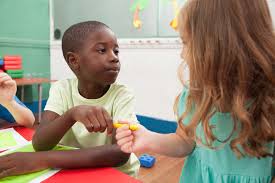

Tips for teaching children to share!
Teaching children to share is an important part of early social development, but it takes time, patience, and the right strategies. Young children are naturally focused on their own needs and may not yet understand the concept of taking turns or considering others’ feelings. The first step is to model sharing behavior in everyday moments—whether it’s offering a snack or taking turns during a game, children learn best by watching trusted adults demonstrate kindness and generosity.
Using play as a teaching tool is highly effective. Games that require turn-taking or cooperative play help children experience sharing in a fun, low-pressure way. Setting up activities like building a puzzle together or passing a ball back and forth encourages children to wait, take turns, and enjoy a shared goal. Narrating these moments with phrases like, “It’s your turn now, and then it will be mine,” reinforces the concept in simple, clear language.
Positive reinforcement also plays a big role. When children attempt to share or take turns, praising their efforts—“That was so kind of you to let your friend use the crayon”—helps them feel good about the behavior and more likely to repeat it. For children who struggle with sharing, gentle guidance and offering choices (“You can both play with it if you take turns for five minutes each”) can make the experience feel more manageable and fair.
Most importantly, keep in mind that learning to share is a process. Young children may need consistent reminders and support as they navigate social interactions. Creating a classroom or home environment that values empathy, patience, and collaboration helps children internalize these values over time. With encouragement and practice, sharing becomes not just a skill—but a habit rooted in kindness and connection.




 click and follow Indiaherald WhatsApp channel
click and follow Indiaherald WhatsApp channel